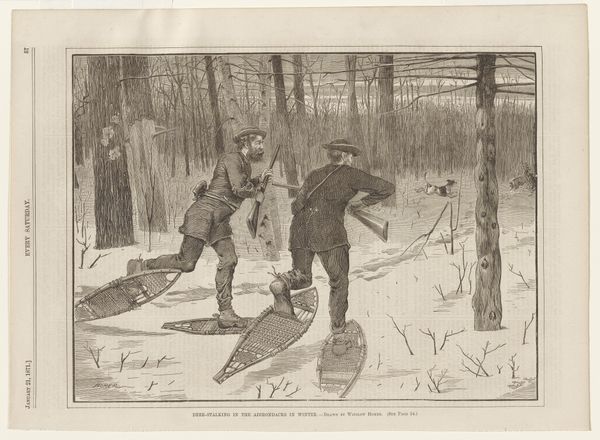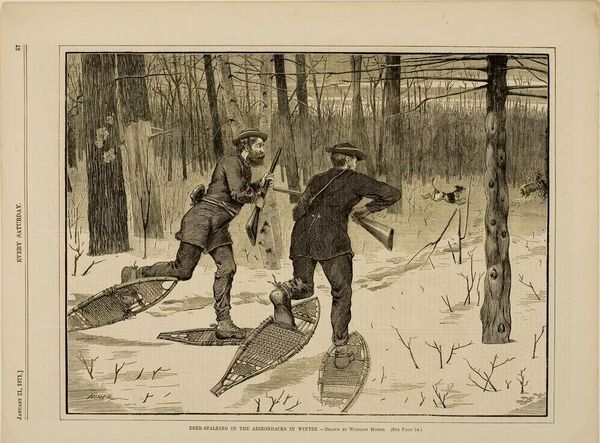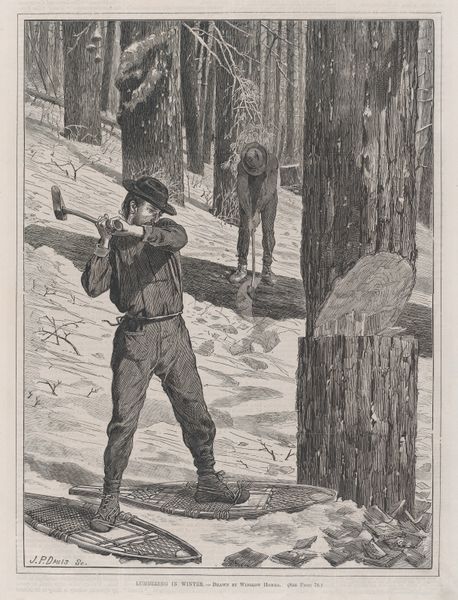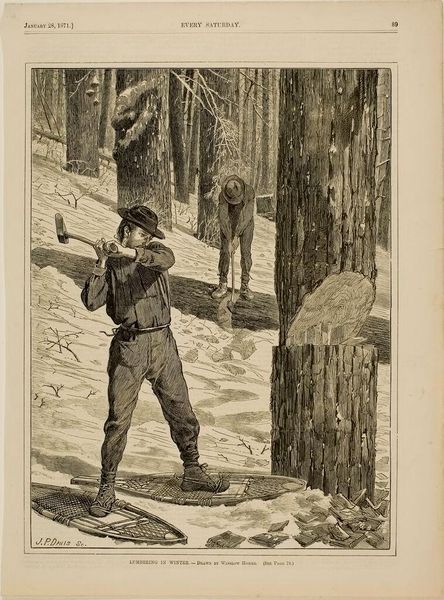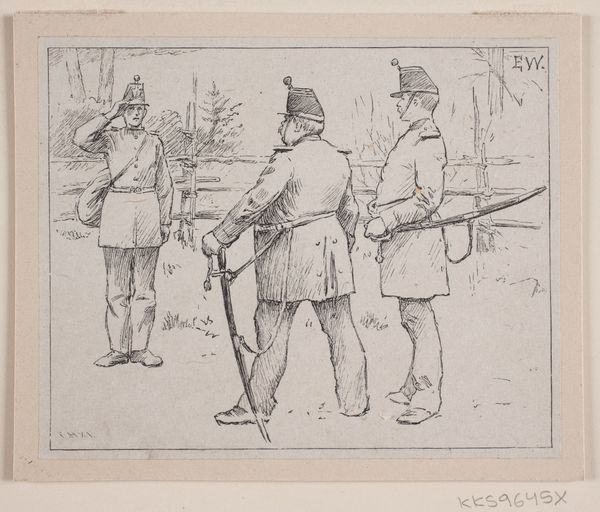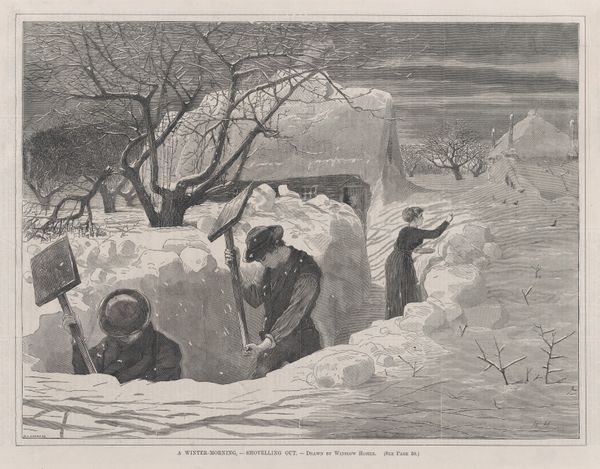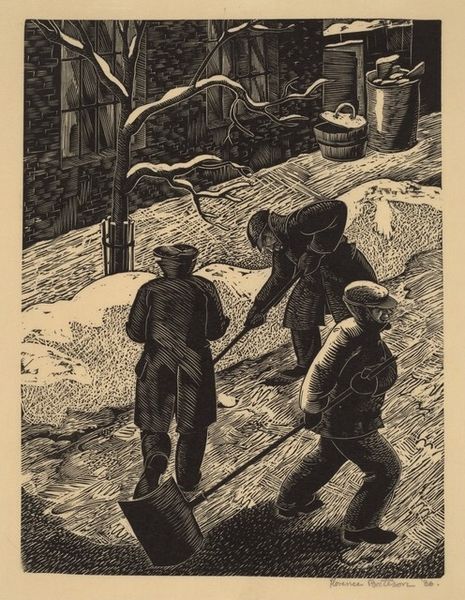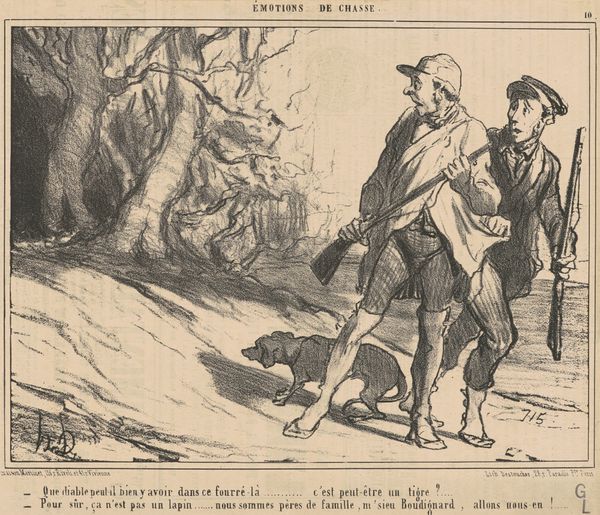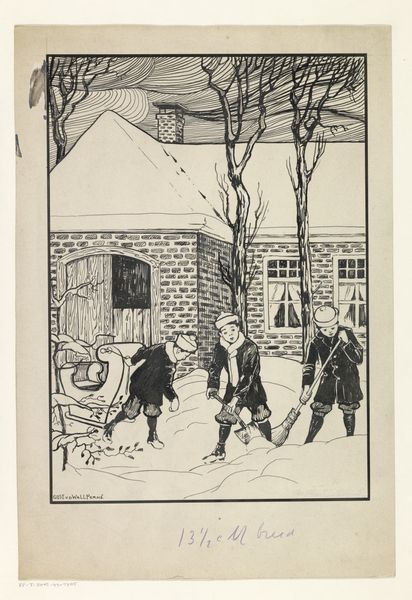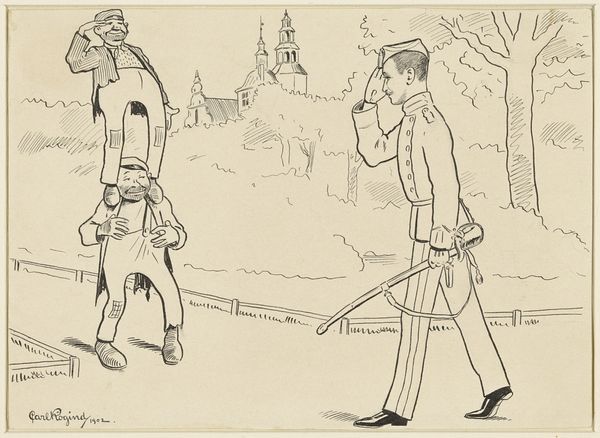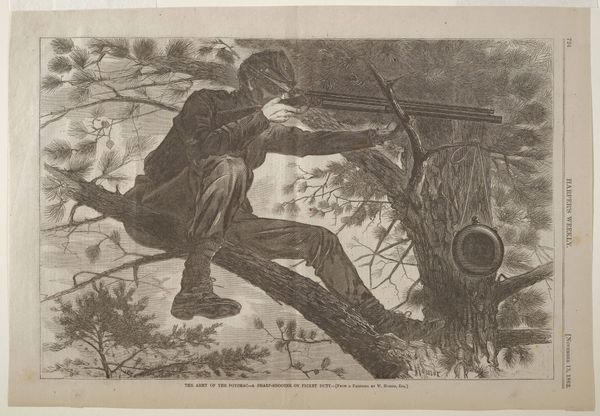
Deer-Stalking in the Adirondacks in Winter (Every Saturday, Vol. II, New Series) 1871
0:00
0:00
drawing, print
#
drawing
#
narrative-art
# print
#
dog
#
landscape
#
winter
#
men
#
realism
Dimensions: sheet: 10 9/16 x 14 5/8 in. (26.8 x 37.1 cm) image: 8 7/8 x 11 3/4 in. (22.5 x 29.8 cm) block: 9 1/8 x 12 1/16 in. (23.2 x 30.6 cm)
Copyright: Public Domain
Curator: Winslow Homer's "Deer-Stalking in the Adirondacks in Winter," originally published in "Every Saturday" in 1871, presents a compelling glimpse into a winter hunting scene. Editor: It's quite stark, isn't it? The monochrome emphasizes the bleakness of winter and the stark reality of the hunt. A bit unsettling, honestly. Curator: Let's unpack that a bit. Beyond the visual bleakness, what do you see in the symbolism here? Editor: Well, the men with their rifles immediately evoke themes of masculinity and domination over nature, a recurring motif in 19th-century art. Hunting scenes often symbolized power dynamics and the relationship between humans and the environment. Curator: Absolutely. We see how class intersects with these dynamics. This image was made during a period of rapid industrialization, coupled with a romanticized view of wilderness. For upper and middle-class Americans, leisure activities like hunting in the Adirondacks became a way to express status while temporarily escaping urban life. But what does this mean for the local Indigenous populations who traditionally relied on these lands? Editor: It creates a powerful, albeit uncomfortable, cultural narrative about appropriation and privilege. Even the dog itself could symbolize loyalty and class structure, bred and trained to serve these hunters. The dog’s role isn’t just to aid in the hunt, it underscores social hierarchies. Curator: Exactly. Homer subtly inserts that complex socio-political undercurrent, wouldn't you agree? Also note the composition – how Homer positions the figures emphasizes their active role versus the passive, waiting winter landscape. Editor: And that winter landscape itself resonates with themes of survival and resilience. Snow, trees stripped bare…they are enduring symbols found across many cultures. Here, though, the focus seems to shift that resilience towards the hunters, projecting strength onto their endeavor. Curator: That resonates well. "Deer-Stalking" makes visible certain dominant cultural perspectives and biases prevalent at that moment in history. Editor: Indeed. This piece becomes a snapshot not only of a hunting trip, but a specific social order. It really makes you consider the complexities embedded within seemingly simple genre scenes.
Comments
No comments
Be the first to comment and join the conversation on the ultimate creative platform.
